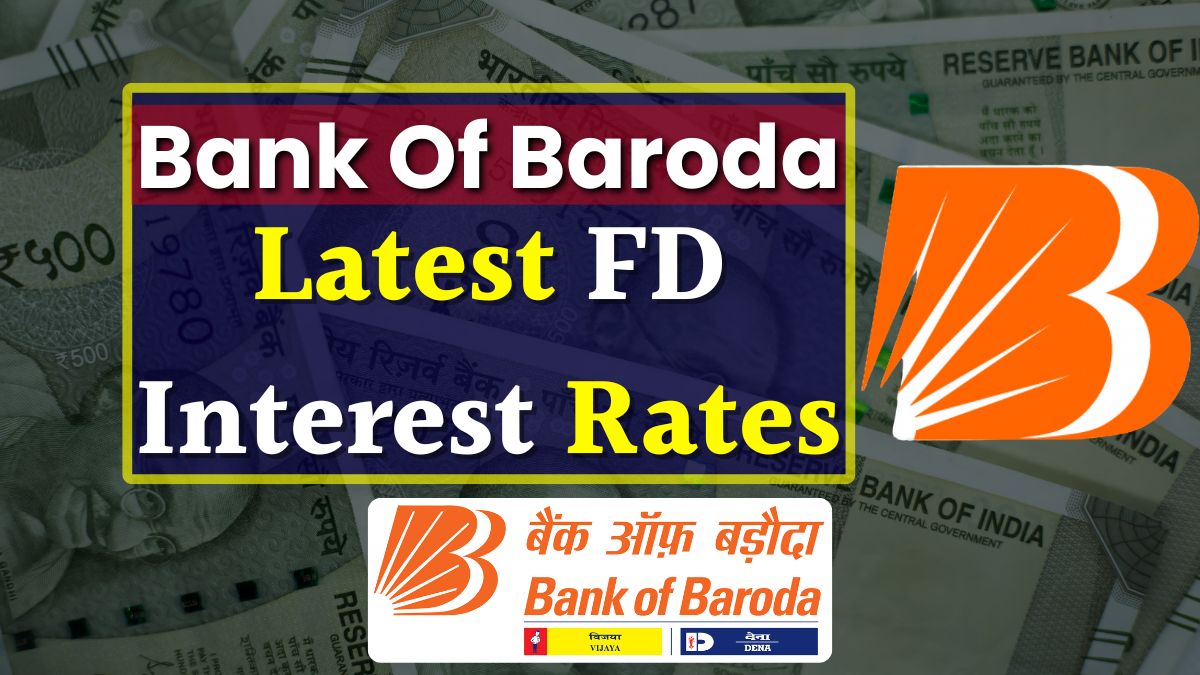Bank of Baroda one of India’s biggest public sector banks—has officially reduced interest rates across all its fixed deposit schemes. The highest cut is 0.40%, and the new rates came into effect on June 12, 2025.
If you were hoping to lock in higher interest, this might feel like a setback. But don’t worry—we’ll walk you through the numbers and help you understand where you still have options.
Bank of Baroda Latest FD Interest Rates (As of June 12, 2025)
| Tenure | General Public | Senior Citizens |
|---|---|---|
| 7 to 14 days | 3.50% | 4.00% |
| 15 to 45 days | 3.50% | 4.00% |
| 46 to 90 days | 5.00% | 5.50% |
| 91 to 180 days | 5.00% | 5.50% |
| 181 to 210 days | 5.50% | 6.00% |
| 211 to 270 days | 5.75% | 6.25% |
| 271 days to < 1 year | 6.00% | 6.50% |
| 1 year | 6.50% | 7.00% |
| >1 year to <400 days | 6.50% | 7.00% |
| 400 days to 2 years | 6.50% | 7.00% |
| 2 to 3 years | 6.50% | 7.00% |
| 3 to 5 years | 6.40% | 7.00% |
| 5 to 10 years | 6.00% | 7.00% |
| 10+ years (Court Order) | 5.50% | 6.00% |
| 444 days (Square Drive Scheme) | 6.60% | 7.10% |
What This Means for You
If you’ve been depending on FDs for stable returns, this might feel like a dead end. But here’s the truth:
You still have options.
Let’s say you’re a retiree who’s been relying on FD income to cover monthly expenses—this rate drop might feel like the rug’s been pulled out from under you. Or maybe you’re saving for a big goal—like your child’s education or your daughter’s wedding. Every fraction of a percent now matters more than ever.
3 Smart Steps to Take Right Now
1. Compare Rates Across Banks
Bank of Baroda isn’t the only player in town. Other banks and NBFCs may still offer slightly better FD rates. Don’t settle—shop around before locking your money in.
2. Split Your FDs
Instead of putting everything in one long-term FD, consider creating multiple short-term FDs. That way, you can reinvest quickly if rates go up again.
3. Look Beyond FDs (But Carefully)
If you’re open to taking a bit more risk, look at government bonds, senior citizen savings schemes, or even post office deposits. They’re not always flashy, but they can help balance safety and return better in times like these.
Why the Special 444-Day FD Still Stands Out
The Square Drive Deposit Scheme is one bright spot. It offers 6.60% for general public and 7.10% for seniors—slightly higher than many standard tenures.
If you’re looking for a mid-term, relatively high-yield option, this could be worth considering, especially if you’re not ready for long-term commitments or risks.
FAQ
1. Why did Bank of Baroda reduce FD rates?
Interest rates are tied to broader economic factors like inflation and liquidity. When the RBI adjusts rates or when banks want to control funds flow, FDs are often the first to change.
2. Are these new rates fixed for existing FDs?
No. If you’ve already booked your FD before June 12, 2025, your rate stays the same. The new rates apply only to new or renewed deposits.
3. Is the 444-day scheme better than a 1-year FD?
It can be. For seniors, the 444-day scheme offers 7.10% vs. 7.00% for a 1-year FD. That little extra can add up, especially on large deposits.
4. Should I break my existing FD and rebook at a new rate?
Only if the new rate is higher or suits your goals better. But most times, you’ll lose interest if you break an FD early, so check the penalty rules first.
5. What’s a safer option for seniors after this rate cut?
Consider the Senior Citizen Savings Scheme (SCSS) or Post Office Monthly Income Scheme (MIS)—both government-backed and offering steady returns.



